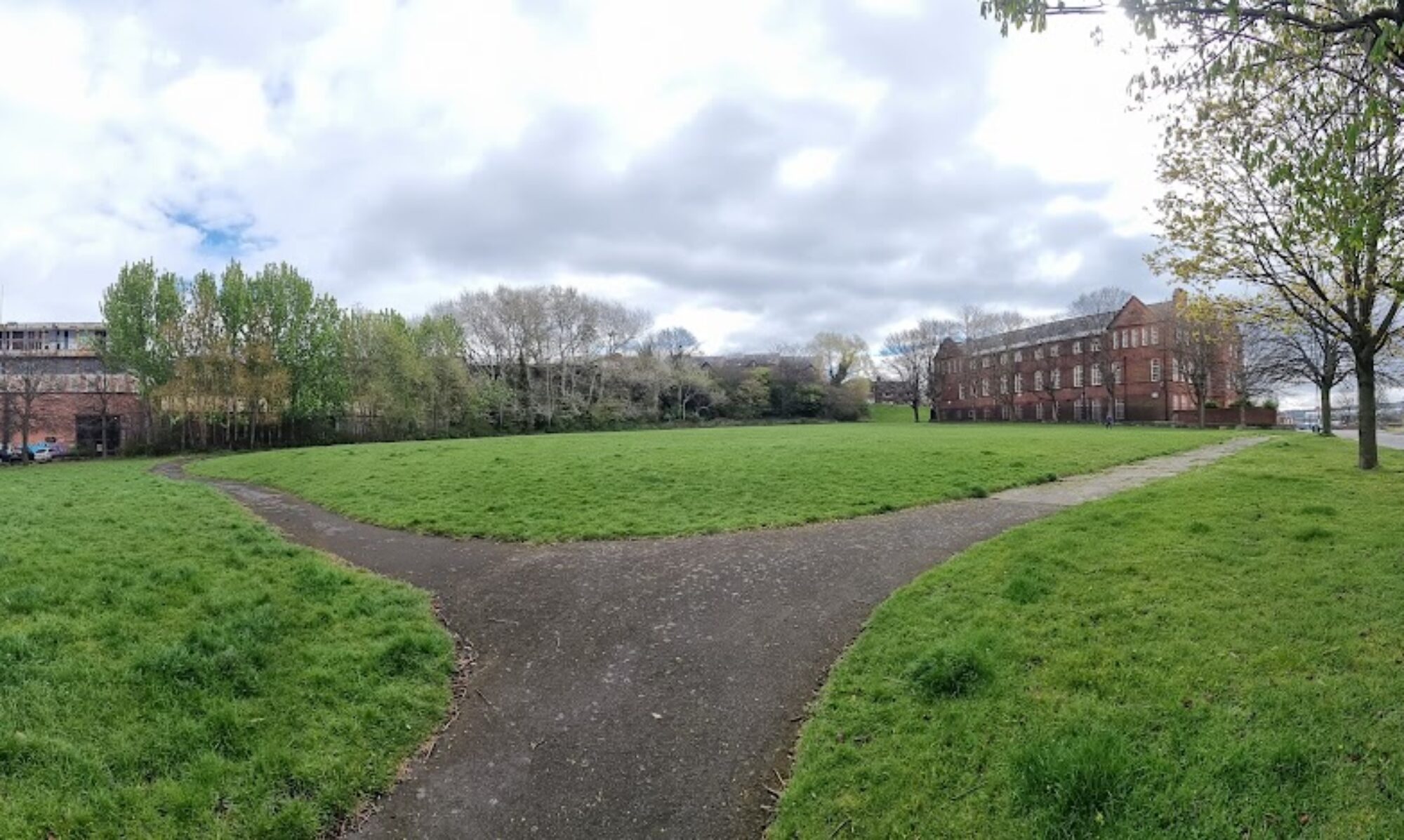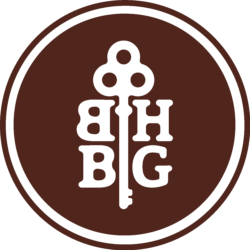Are you ready to embark on a journey of discovery and contribute to the vibrant history and heritage of Newcastle? Look no further than Ballast Hill Burial Ground (BHBG). This post introduces the fascinating history of this little-known historic site and its significance. But that’s not all—at the end, it guides you on how to actively get involved in its reawakening. Join us as we embark on a journey to honour the past and shape the future of BHBG. Act now and be a part of something truly meaningful!
Background
BHBG is a historic green space located within the Lower Ouseburn Valley Conservation Area in Newcastle. Its history is BHBG is mostly a forgotten one. This unconsecrated burial site, also known as Plaguey Fields or Grannies Park, was primarily used by dissenters of the Anglican church (e.g., Protestant, Quaker, Baptist, and Methodist immigrants), the poor from all denominations, and paupers. It also is the final resting place of plaque and cholera victims.
Today, BHBG is owned by the Newcastle City Council and is the site of one of the largest UK non-conformist burial grounds outside of London. On Tyne and Wear’s Historic Environmental Record sitelines, the site is referred to as Ballast Hills Graveyard and is assigned the Historic Environment Records (HERs) number 1597, It is noted as a post-medieval religious ritual and funerary site.
Evidence suggests that burials at BHBG started in the early 1600s, although the oldest recorded gravestone was dated to 1708 in 1864. Some believe the burial site was initially used by Scottish emigrants. BHBG featured in local debates over overcrowding and sanitary reform. In 1785, the Common Council received a petition to build a wall around the burials, preventing animals and grave robbers from disturbing the graves and to include the sexton.
Body Snatching
Body snatching became a significant issue in the 19th century in the United Kingdom, demanding attention towards the upkeep of burial grounds. Resurrectionists, as they were commonly called, would unlawfully open coffins to pilfer valuable items and take the corpses themselves. This practice was prevalent across the country due to the profitable trade in selling dead bodies to medical schools and their students.
Despite being illegal and highly criticised, incidents of body snatching persisted, with notable cases documented in Newcastle, particularly in Ballast Hills. An article from in the Newcastle Courant (19 January 1829) reported the discovery of the remains of Elizabeth Mills, a seven-year-old girl, at the coach office just a day after her burial at Ballast Hills. The article described how the grave had been meticulously resealed, making it nearly impossible to detect any disturbance. The burial clothes were intact, but the coffin lid had been broken.
Body Counts
BHBG in Newcastle had more interred bodies than all the churchyards in the city combined, with an average of 599 interments annually from 1820 to 1825. The Corporation of Newcastle upon Tyne received a sixpence for each burial (Richardson 1846). In 1824, out of the 1454 burials in Newcastle, 805 were at BHBG.
| Burials in Newcastle burial grounds, 1820 to 1825 (modified from Rugg 1992: 38) | |||||||
| Burial Ground | Size in ~acres | 1820 | 1821 | 1822 | 1823 | 1824 | 1825 |
| Ballast Hills | 1.5 | 542 | 527 | 556 | 523 | 805 | 624 |
| All Saints | .08 | 100 | 106 | 103 | 135 | 149 | 111 |
| St John’s | .08 | 143 | 144 | 177 | 149 | 193 | 168 |
| St Nicholas | .05 | 59 | 65 | 56 | 68 | 72 | 82 |
| St Andrew’s | — | 139 | 223 | 140 | 135 | 235 | 189 |
Mckenzie (1827:408) reported “the burial-place was formally much larger; for houses have been built, and glass-house cinders poured over the graves of many who had been interred without the present enclosed grounds.” Richardson (1838) suggests that BHBG covered about three acres.
According to the Henzell report (Newcastle City Council 1883:43), roughly 16,000 people were buried at BHBG from 1794 to 1825. By the mid-1850s, all the churchyards in the town were closed due to the unsanitary conditions caused by cholera deaths. BHBG formally closed in 1853, with Westgate Hill Cemetery replacing it as a burial place. The total estimated number buried exceeds 37,000 people.
Written in Stone
In 1817, John Bell, the Gateshead Surveyor and antiquarian, finished the transcription of 621 gravestones at BHBG (Bell 1817). In 1903, 920 gravestones were reported in BHBG, of which 108 were weathered and unreadable; they were arranged regularly in 39 lines (Chadwick & Dodds 1904). The gravestone inscriptions provide insight into the occupations of the buried individuals, such as blacksmiths, bottlemakers, cabinetmakers, and shipwrights, among others (Morgan 2004).
Despite once being described as a place “crowded with the dead” (Newcastle Courant 1829), this area is now a small and underutilized greenspace with few reminders of its past, aside from the gravestone pathway and an interpretive sign. It serves as a contemplative space for reflecting on the temporary nature of life and death, and the removal and replacement of headstones highlight how markers and memories may not last forever. Since, making it easy to forget that this peaceful green space is the final resting place of thousands of people.
Change in Use
In addition to being the location of the burial ground and as the name suggests, the area is known for great heaps of ballast. Ballast is a dense heavy material, i.e., clay, rocks, carried in ships to maintain stability when not caring cargo. Once ships arrived on the Tyne to take away coal and other cargo, the ballast would be left behind. The practice of shifting the ballast was recorded in 1649 with the quote, ‘Below east, is Ballast Hill, where women upon their heads carried ballist, which was taken forth of small ships which came empty for coales…’ (Crawhall and Gray 1884: 95).
In 1884, the Mayor of Newcastle opened BHBG as an ornamental garden intended for the use and benefit of local residents, following concerns raised by Councillor Henzell to the Town Council. The Council instructed that the site be developed with walkways and planted with trees, shrubs, and flowers to create a public space. Under the guidance of city engineer Mr. Laws, the area was transformed while preserving the gravestones, with accumulated debris cleared away.
In 1930, the site was turned into a playground that remains an open space today. Some headstones were used as flagging for a pathway, while others were relocated. Due to erosion and wear, only a few inscriptions are still decipherable on the gravestones. Although the site is mostly the final resting place of ordinary people, a few notable individuals, such as Robert Gilchrist and Margaret Angus, are also buried there.
The Awakening
This forgotten place in the Ouseburn Valley is now being awakened. Researchers from Newcastle University are exploring project ideas focused on BHBG to stimulate involvement and innovation, funded by the Faculty of Humanities and Social Science through its Pioneer Award Scheme. The goal is to explore and co-develop potential activities surrounding BHBG involving community engagement and student involvement, while expanding links between academia and the wider community.
The potential for project themes is extensive and, to a certain extent, constrained only by one’s imagination, ranging from heritage, volunteerism, the arts, archaeology, burial practices, history, archives, education, conservation, religion, social policies/injustices, and health and disease. Connecting with one’s past through family connections or links to a special place gives meaning to our lives, strengthens resilience, and contributes to our well-being. These initiatives are promising steps towards preserving the heritage of the Ouseburn Valley, while promoting community involvement in the process.
If you are interested in learning more about the BHBG Project or signing up to receive the BHBG newsletter, then email the BHBG Project team.
List of References
Bell J (1817) Newcastle, Ballast Hills Burial Ground, Grave Stones (1817). Northumberland and Durham Family History Society, Newcastle: AI-B147; Newcastle City Library: L929.3 N536 (microfiches).
Chadwick J & Dodds E (1904) Inscriptions in Ballast Hills Burial Ground, Newcastle upon Tyne, 1904. Complied and Indexed by Joseph Chadwick & Edwin Dodds. Northumberland and Durham Family History Society, Newcastle: AI-BMF139 and AI-NBL098; Newcastle City Library: microfiche.
Crawhall J & Grey W (1649) Chorographia, or a survey of Newcastle Upon Tyne: 1649. Newcastle upon Tyne, United Kingdom: Andrew Reid.
Mackenzie E (1827) “Protestant Dissent: Chapels and meeting-houses.” Historical Account of Newcastle-Upon-Tyne Including the Borough of Gateshead. Newcastle-upon-Tyne: Mackenzie and Dent, 1827. 370-414. British History Online. Web. 13 February 2022. https://www.british-history.ac.uk/no-series/newcastle-historical-account/pp370-414#p40
Morgan A (2004) Beyond the Grave – Exploring Newcastle’s Burial Grounds, Tyne Bridge Publishing, pages 129-132.
Newcastle City Council (1883) Proceedings of the Council of the City and County of Newcastle-upon-Tyne.
Richardson MA (1838) Richardson’s descriptive Companion through Newcastle upon Tyne and Gateshead … To which is prefixed an Inquiry into the origin of the primitive Britons. United Kingdom: MA Richardson.
Rugg J (1992) The rise of cemetery companies in Britain, 1820-53. PhD Thesis, University of Stirling.
Newcastle Courant (1829 November 14) No title.
Newcastle Courant (1829 October 24) Rev R. Pengilly’s address to the assembled at the first interment of Westgate Hill Cemetery, p. 2.

